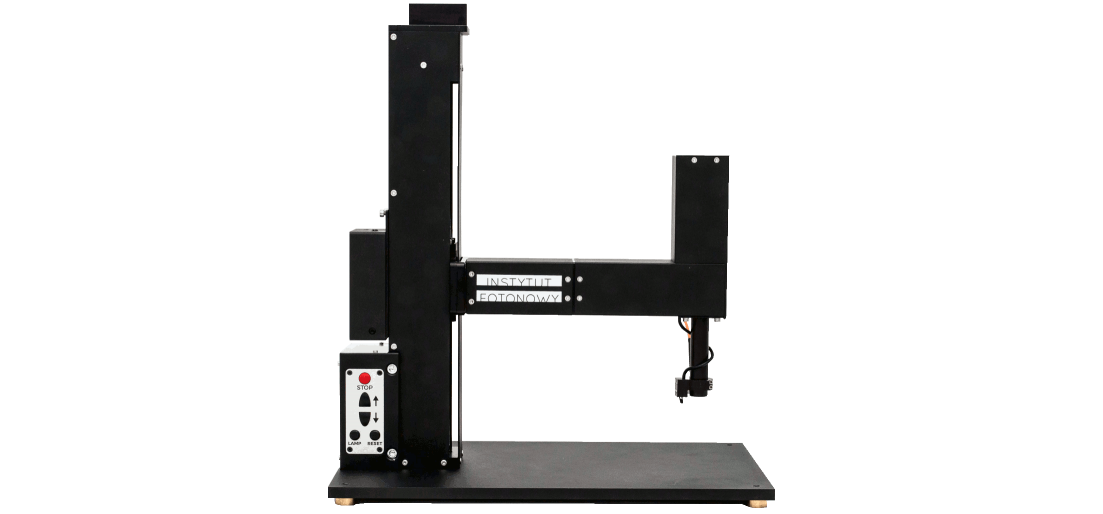Micro Fading Tester For optimal illumination of expositions in museum
Couldn't load pickup availability
Delivery and Shipping to EU
Delivery and Shipping to EU
We will add in the quotation, the shipping, insurance, customs clearance costs.
Micro Fading Tester For optimal illumination of expositions in museum
Instytut Fotonowy
Description
The Micro Fading Tester (MFT) measures temporal behavior of dyes under irradiation.
MFT tests allow to rank objects in collections by their sensitivity to light.
This approach allows to adopt exhibition policies to
actual data obtained for each tested object rather than use
general assumptions which could be either too conservative
and unnecessarily limit viewers access to the object or too optimistic
and lead to irreversible light-induced damages.
specifications
The most important features of the instrument
Spot diameter: 0.5 mm
Spectral range: 400-750 nm
Spectral resolution: 2.50 nm
Vertical motion range: -80 to 200 mm
Light source: white LED
Focus point search: automatic
Maximum light intensity at focus: 4 mW
PC connectivity: USB 2.0
Size: 250 x 400 x 440 mm (w x l x h)
Size when folded: 440 x 400 x 80 mm (w x l x h)
Mass: 5 kg
software specifications
The most important functions of the software
Full control of the instrument: max. light output, intensity of dimmed light for positioning, speed of autofocusing, ..
Option to record series of reflectance spectra
Automatic test ending according to the user selected criteria: time, dose or color change
One button calibration for background and white standard
Fast high precision autofocusing
3 pre-selected light intensity values for quick operations
% reflectance reading available
Sample fading can be compared with user generated curves for Blue Wool standards or other samples
Instant access to colorimetric values with color difference ΔE76 and ΔE2000 according to CIE76 and CIE2000 standards
Color change displayed on screen
Automatic generation of reports of a faded sample by a single button
Automatic radiometric and photometric calibration of the light source with the light calibrator
operation
The MFT allows to measure color change under illumination in a non-destructive way:
(1) the spot of light on a sample has only 0.5 mm in diameter, (2) the total color change (∆E)
for the selected point is constantly monitored during the measurement and the operator
and/or the instrument software could stop the test when ∆E reaches a selected threshold value
(i.e. below reaching the level of just noticeable difference).
In practice, for non-glossy objects fading marks are never visible unless fading was performed
to reach extreme ∆E values (>15).
The micro fading tests could be performed for nearly all classes of materials found in
museum collections, and is particularly suited to study fugitive objects (works on paper –
manuscripts, prints, watercolors; canvas paintings; textiles). Some classes of objects cannot
be tested by the MFT method or their testing is difficult to perform or to interpret obtained
results – objects of a very high light stability and objects interacting with light in an non-typi-
cal manner (highly reflective or transparent). The MFT instrument could be regarded as
portable and so it could be moved within the museum to the objects’ location,
which is particularly important in case of large artefacts (e.g. wall paintings, sculptures, maps)
or objects of significant value.



